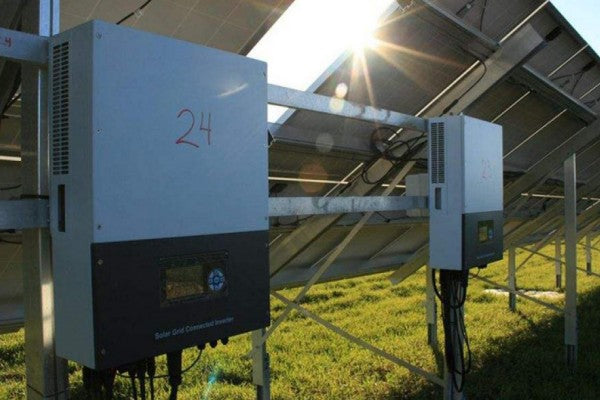
Welcome, fellow solar enthusiasts! If you're considering harnessing the power of the sun and embarking on a sustainable energy journey, you've probably encountered two essential components in every solar energy system: the charge controller and the inverter. In this blog post, we'll delve into the world of these dynamic duo devices, exploring their roles, functionalities, and the magic they work together to optimize your solar energy setup. So let's shed some light on the charge controller and inverter and understand how they collaborate to make your solar dreams come true!
Charge Controller – The Sun's Traffic Cop
Before we dive into the fascinating partnership between the charge controller and the inverter, let's shine a spotlight on the crucial role of the charge controller in your solar energy system.
Charge Controller Overview:
When you install solar panels on your rooftop or in your backyard, they start converting sunlight into direct current (DC) electricity. But the sun isn't consistent, and the amount of electricity produced varies throughout the day. This is where the charge controller steps in as the sun's reliable traffic cop, regulating the flow of power from the solar panels to the battery bank.
The Charge Controller's Duties:
1. Overcharge Protection: One of the primary tasks of the charge controller is to prevent overcharging of the batteries. As the batteries reach their full capacity, the charge controller senses this and restricts the flow of electricity, ensuring your batteries remain healthy and durable in the long run.
2. Low Voltage Protection: On cloudy days or during periods of low sunlight, the solar panels may not produce enough electricity. In such situations, the charge controller ensures the batteries don't discharge excessively, preserving their life and preventing potential damage.
3. Optimizing Efficiency: By carefully managing the charging process, the charge controller maximizes the efficiency of your solar energy system. It allows the batteries to receive an optimal charging current, making the most of the available sunlight.
The Inverter – Turning DC into AC Power
While the charge controller plays a crucial role in managing the energy input, the inverter is responsible for the other end of the spectrum – converting the direct current (DC) electricity stored in your battery bank into the alternating current (AC) power used to power your home appliances.
Inverter Unveiled:
Think of the inverter as the solar system's translator. Most household appliances and electronics operate on AC power, but your solar panels produce DC power. The inverter bridges this gap, ensuring that the electricity generated from your solar panels is compatible with your home's electrical system.
Inverter Features:
1. Waveforms: Inverters come in different types based on the waveform they produce: pure sine wave, modified sine wave, and square wave. Pure sine wave inverters provide a smooth and clean AC output, making them compatible with almost all appliances, while modified and square wave inverters are more affordable but may not be suitable for sensitive electronics.
2. Grid-Tied Inverters: For those who wish to sell excess electricity back to the grid, grid-tied inverters are the way to go. These inverters synchronize the solar system with the utility grid, allowing you to export surplus energy and earn credits or compensation.
3. Battery Backup: Some inverters offer battery backup capabilities, enabling you to store excess energy in batteries and use it during power outages or when the sun isn't shining.
Dynamic Duo: How They Work Together
Now that we've introduced our two solar superheroes, let's explore the magic they create together to ensure your solar energy system performs at its best.
The Dance of Collaboration:
1. Optimal Charging: The charge controller communicates with the inverter to understand the electrical demand of your household and the available solar power. By doing so, it ensures that the inverter receives just the right amount of DC power from the batteries, optimizing the system's overall efficiency.
2. Seamless AC Power: As the charge controller manages the flow of electricity to the batteries, the inverter transforms this stored DC power into high-quality AC power. The result is seamless electricity supply to power your lights, appliances, and devices, all thanks to this well-choreographed collaboration.
3. Battery Care: The charge controller not only protects the batteries from overcharging but also ensures they receive a full charge when necessary. This diligence by the charge controller translates to longer battery life, maximizing the return on your solar investment.
Conclusion
As you venture into the exciting world of solar energy, understanding the partnership between the charge controller and inverter is crucial for creating an efficient and reliable solar energy system. These two indispensable components work harmoniously to harness the sun's power, protect your batteries, and convert DC electricity into AC power, ensuring you have a sustainable and eco-friendly energy solution.
Now, equipped with this knowledge, you can confidently embark on your solar energy journey, making informed choices when purchasing solar-related products. Embrace the power of the sun, and let your solar energy system shine bright like the star it harnesses! Happy solar journey!



0 comments